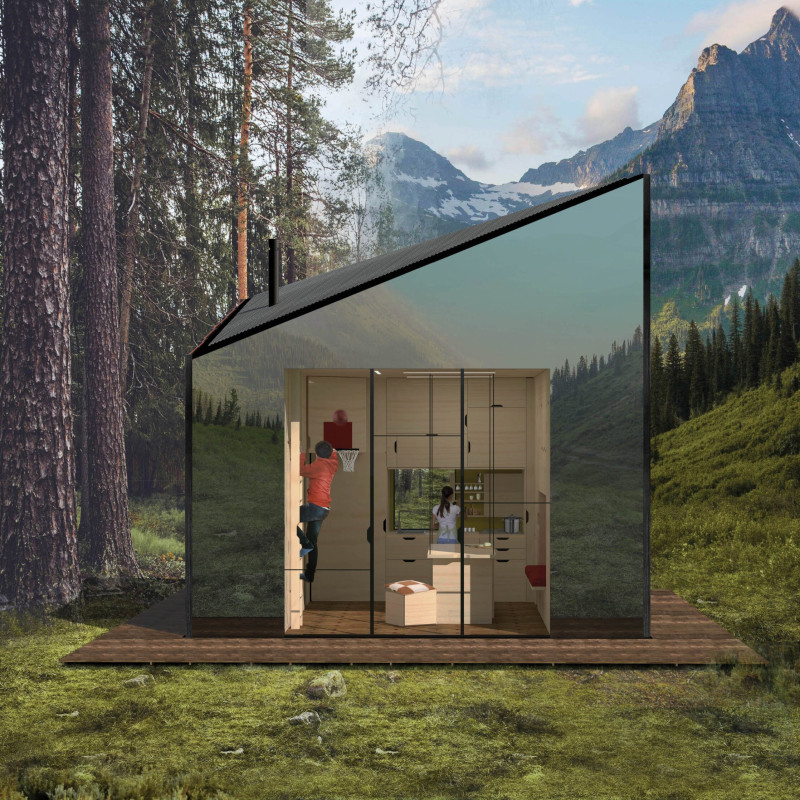5 key facts about this project
Backstage reimagines the idea of modern living through a unique approach to space and functionality. Designed for a couple, it also provides options for accommodating guests, all within a single room. This concept prioritizes flexibility and ease of use, making it suitable for various living environments, whether in cities or rural settings. The project underscores the importance of utilizing each square foot effectively while maintaining a focus on sustainability.
Design Concept
The design departs from typical room layouts, offering an open-plan setup where the space can be adjusted based on the occupants' requirements. Central to this idea is the flexibility of a single room that can serve multiple functions. This multifunctionality makes living more efficient and responsive to the needs of daily life, eliminating the limitations of conventional housing design.
Incorporation of Furniture
A standout feature is the multifunctional furniture system. The bed and dining table are cleverly stored in the ceiling, effortlessly lowered through mechanical handles attached to steel cables when needed. This design choice ensures that essential furniture remains out of the way when not in use, allowing the space to adapt throughout the day. Residents can easily create an open area for activities or a cozy sleeping nook, depending on their current needs.
Sustainability Features
Backstage also integrates sustainable practices into its design. Solar panels generate energy, which is stored in a power wall, enhancing efficiency. A rainwater collection system beneath the floor treats water for safe drinking, making the residence self-sufficient. The heating system relies on a pellet stove, thoughtfully designed with two heat exchangers to improve warmth while minimizing energy use. Every feature aligns with an eco-conscious philosophy.
Materiality and Structural Integrity
Cross-laminated timber is the primary material used throughout the construction. This choice adds strength while also being environmentally friendly. Timber's natural properties contribute to a lower carbon footprint and enhance the building's sustainability. The careful selection of materials and integrated systems work together, creating a cohesive space that balances practicality with environmental considerations.
The design culminates in an engaging living space, where thoughtful details, from hidden furniture to efficient systems, work together to create a comfortable and responsive home environment.























































